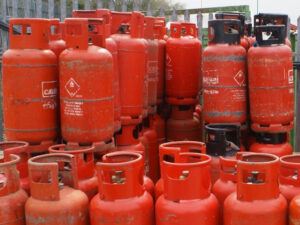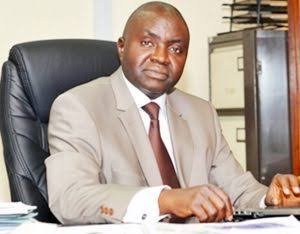Nigeria requires about $750m investment in the transportation and retailing infrastructure for Liquefied Petroleum Gas, popularly called cooking gas, to achieve the target of five million metric tonnes of annual consumption, operators in the LPG space have said.

Speaking at the 2nd Annual Virtual LPG workshop organised by the African Refiners and Distributors Association, which was attended by experts, they also stated Nigeria’s Gross Domestic Product might witness $1bn growth yearly through optimisation of flared gas.
In his presentation at the workshop, the Executive Director, Rainoil Limited, Emmanuel Omuojine, stated that the investments would also be needed in gas adoption and utilisation.
He said, “Nigeria requires about $750m investment in LPG transport and retailing infrastructure across the country to achieve the target of five million metric tonnes annual consumption.
“Investing in gas adoption and utilisation, e.g. LPG bulk storage, LPG trucks, LPG filling plants, LPG skids, gas cylinder manufacturing, LNG (Liquefied Natural Gas) plants, CNG (Compressed Natural Gas)/LNG trucks, LNG regasification /compression stations, and CNG filling stations.
“An estimate of over $27m will be generated by switching 50 per cent of kerosene and firewood users to LPG. Optimisation of flared gas could impact the country’s GDP by up to $1bn per year.”
He said the barriers to LPG growth in Nigeria include sub-optimal infrastructure, poor roads for transportation, significant gas processing infrastructure deficit and obsolete pipelines.
Others include limited berthing facilities and domestic equipment manufacturing, foreign exchange for import of LPG and related equipment as well as regulatory and policy frameworks.
Omuojine decried the lack of investment incentives, import bottlenecks, multiple agency interface for projects and importation.
He frowned at the challenges with the implementation of the Petroleum Industry Act, stressing that there was need for the full deregulation of Premium Motor Spirit, popularly called petrol, as well as the implementation of the gas policy.
The Executive Secretary, ARDA, Anibor Kragha, described LPG as the fastest-growing petroleum product in sub-Saharan Africa, as he noted that the per capita LPG consumption in the subregion was, however, the lowest in the world.
Kragha stated that Nigeria and other African nations and stakeholders must find sustainable ways to address the challenges, adding that although sub-Saharan Africa accounted for 14.4 per cent of the world’s population, it had less than one per cent of global LPG consumption.
“Finance and infrastructure remains key as many countries have little or no bulk handing facilities for LPG,” the ARDA scribe stated.
He, however, admitted that LPG consumption in Africa had more than doubled since 2010, as the consumption rate now hovered around 9.7 per cent annual growth rate over the past decade.
Stakeholders at the workshop stated that Nigeria had the largest proven gas reserves in Africa at over 209 trillion cubic feet, making it the 9th largest in the world, but imports 70 per cent of its LPG requirement.
Read Also: Nigeria, Morocco Plan World’s Longest Offshore Gas Pipeline
It was also stated that Nigeria had the fastest growing LPG sector in the world with a projected LPG market size of $10bn, as the annual per capita consumption of LPG had risen from 1.8kg in 2015 to 5kg in 2021.
They stated that Nigeria’s domestic demand for LPG increased from just over 400,000MT in 2016 to 1.04 million MT in 2021, while domestic LPG storage capacity was put at over 60,000MT.
They also stated that the total African market size for LPG would exceed $210bn by 2028 and that the use of LPG would continue to grow faster than other fuel sectors as LPG would be available due to its abundance both in Nigeria and other parts of Africa.
Kindly like us on Facebook















